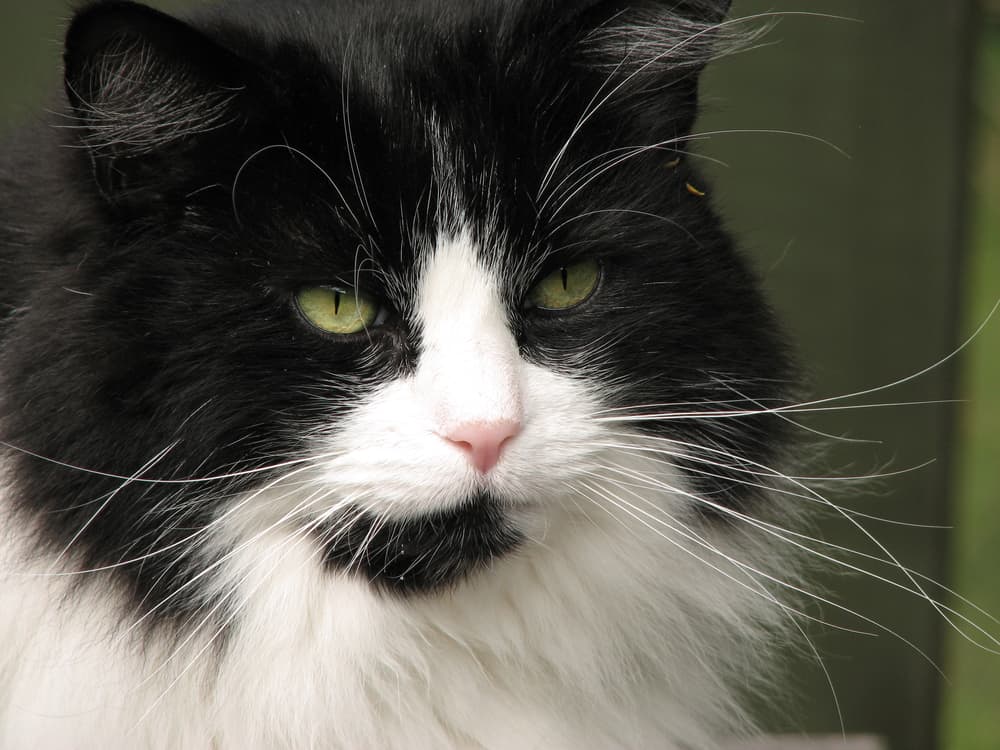All products and services on Project PAWS are independently selected by our editors, contributors, and veterinary experts. This post contains affiliate links. As an Amazon Associate I earn from qualifying purchases.To learn more, view my disclosure policy.
Behavior Changes in Senior Cats: Thanks to great pet owners like you, good nutrition and quality veterinary care cats are living longer and longer, some cats even live into their 20s! It is important you watch your senior kitty closely and make sure to take note of not only the physical changes but also your cat’s behavioral changes. Behavior changes may be a result a physical change you don’t see. Cats are very good at hiding pain, as showing pain or weakness makes them more vulnerable to predators. Even though you have kept your cat safe, there genetic make-up remains geared towards self-preservation.
Physical and Mental Development
The things most older cats frequently develop arthritis in their joints, vision and hearing. The arthritis may slow your cat down the quickest. It makes it harder for them jump up on the back of the couch, climb the cat condo or get into and out of the litterbox. They sleep more too, if that is possible for a cat. Aging cats can develop dementia which increases their health risk. It is harder for them to learn new things and adjust to change now, and may get confused more easily. Talk to your vet as soon as you notice any of these changes in your cat. Elderly cats tend to have more problems but many of these complications can be successfully managed. There is pain management for sore joints, so don’t let kitty suffer.
Behavior Changes
Like other aging animals your cat may become irritable, cranky and more easily disturbed. Playmates may not be welcomed as often and they may become more easily stressed when change happens in their schedule. Noise and commotion can cause anxiety and cause stress, so be aware of your kitties’ environment and make sure to give them a safe quiet area to retreat too. Even if they have been an angel their entire life and never scratched a soul, their temper will be shorter.
If you have other animals in the household, you may notice them all undergoing behavioral changes. This is because animals develop a natural pecking order, and as your cat ages, their place in that order may change. The other animals can begin to pick on them. If this becomes a problem, you may need to separate them.
Cats can be loners, but you may notice your senior kitty keeps to themselves. Try to make them as comfortable and relaxed as possible by minimizing change in their world. If anxiety problems persist or get out of hand, talk to you vet about medication options.
Health and Nutrition
More frequent vet visits are a good idea with a senior kitty. Instead of year your senior might need twice or three times a year depending on how well they are again. The veterinarian should do a complete senior exam including a complete physical exam and evaluation of blood, urine and stool samples.
The most common things your senior cat are:
- diabetes
- Kidney
- liver disease
- urinary tract problems.
The quality and shine of your cat’s coat and increased shedding can be indicators of a systemic illness or endocrine disorder. The footpads of older cats tend to become thicker, and their nails can be more brittle.
Be aware of the increased possibility of constipation. Inadequate water intake can contribute to constipation. If your cat has problems with arthritis, they may also experience constipation, because it can hurt when he tries to go in the litterbox. Inactivity can also contribute to constipation. Ask your veterinarian about increasing your cat’s water intake and making other adjustments to help ease constipation.
Your older cat’s internal temperature gauge can get a little off. Perhaps your fuzzy feline used to tolerate cold temperatures well, but now they seem cold all the time. Regulate the temperature in their environment and give them a warm snuggle space.
Your cat’s quality of life is dependent on your diligence and quick responses to physical and behavioral changes. Even though they may slink off to be by themselves more often, don’t forget to spend some time giving them quality interactions.
